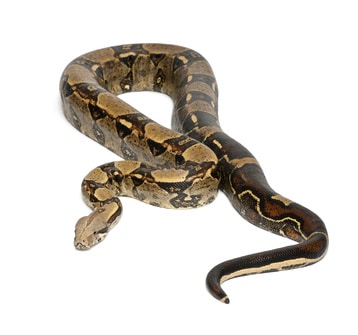

They do not move very fast it is not necessary because they lie patiently and wait to ambush their prey instead of chasing it down.

Although many snakes of different genera belonging to the family Boidae are referred to as boas, only members of this genus are true boas. Until the last decade, it was thought that it was a monotypic genus containing only B. Adaptationsīoa constrictors are not venomous instead they wrap their bodies around their prey and squeeze until the prey can no longer breathe. The Boa genus contains 3 known species: Boa constrictor, Boa imperator, and Boa sigma. Their patterns can vary to match their environment. Boa constrictors range from northern Mexico south through Central and South America. Their coloration can be pinkish or tan with a dark brown or black pattern. Boa constrictor is an exclusively New World species which has the largest distribution of all neotropical boas. The largest is the Anaconda, which also lives in the forests of South America. They are not the largest or longest snake.

They usually weigh between 60 and 100 or more pounds once fully grown. The species is native to tropical South America. The boa constrictor is a member of the family Boidae. The largest ever recorded was 18 feet long. The boa constrictor (scientific name also Boa constrictor), also known as the common boa, is a species of large, non-venomous, heavy-bodied snake that is frequently kept and bred in captivity. Sizeįully grown boa constrictors average 6 - 14 feet in length. They catch the bats by hanging in trees and snatching them as they fly by. Dietīoa constrictors are carnivorous and feed on a variety of small animals including birds, rodents, and lizards. Although they are excellent swimmers, they generally avoid the water. They live in tropical climates throughout most of Central and South America, where they hunt at night. They may be found in trees or on the ground. Boa constrictors are powerful snakes and stealthy hunters. These remarkable snakes are highly adaptable to different conditions and can be found in a variety of habitats including rainforests, agricultural areas and deserts.


 0 kommentar(er)
0 kommentar(er)
